Your cart is currently empty!

ISO 11890:2024
ISO 11890:2024 Paints and varnishes – Determination of volatile organic compounds (VOC) and/or semi volatile organic compounds (SVOC) content – Part 1: Gravimetric method for VOC determination
CDN $173.00
Description
This document is part of the ISO 11890 series, dealing with the sampling and testing of coating materials and their raw materials.
This document is applicable to the determination of volatile organic compound (VOC) content in the following cases:
–¬†¬†¬†¬† case 1: where there are single-pack coating materials other than case 3, and the expected VOC content is greater than a mass fraction of 5¬†%, including single-pack coating materials cure not through chemical reactions and single-pack coating materials which cannot be measured by ISO 11890-2 due to chemical cure reactions or gas chromatography temperatures leading to formation of new compounds that would not appear under normal cure conditions and impacts VOC/SVOC calculation.;
–¬†¬†¬†¬† case 2: where there are multi-pack coating materials other than case 3 and the expected VOC content is greater than a mass fraction of 1¬†%;
–¬†¬†¬†¬† case 3: where there are radiation curable coating materials, and the expected VOC content is greater than a mass fraction of 5¬†%. Radiation curable coating materials in this document include coating materials that are cured by UV, electron beam, and other radiation methods.
If the system of the first case contains SVOC, but do not cure through chemical reactions, the VOC result can be influenced by SVOC, see Annex C. In this case, ISO 11890-2 is preferred. ISO 11890-1 cannot be used for the determination of the SVOC content. In water-borne coating materials, that do not cure through chemical reactions, if the water content is much greater than VOC content and VOC content is less than a mass fraction of 10 %, ISO 11890-2 is preferred.
For all three cases, the main purpose measured is VOC. However, clarify that this VOC content can also contain SVOC. The real VOC content can be lower than the VOC content measured by ISO 11890-1.
The method specified in this document assumes that the volatile matter is either water or organic. However, it is possible that other volatile inorganic compounds are present which can require another suitable method for quantification, which is thus allowed for in the calculations. The method defined in this document is not applicable for determination of water content.
Edition
3
Published Date
2024-05-08
Status
PUBLISHED
Pages
15
Format 
Secure PDF
Secure – PDF details
- Save your file locally or view it via a web viewer
- Viewing permissions are restricted exclusively to the purchaser
- Device limits - 3
- Printing – Enabled only to print (1) copy
See more about our Environmental Commitment
Abstract
This document is part of the ISO 11890 series, dealing with the sampling and testing of coating materials and their raw materials.
This document is applicable to the determination of volatile organic compound (VOC) content in the following cases:
-     case 1: where there are single-pack coating materials other than case 3, and the expected VOC content is greater than a mass fraction of 5 %, including single-pack coating materials cure not through chemical reactions and single-pack coating materials which cannot be measured by ISO 11890-2 due to chemical cure reactions or gas chromatography temperatures leading to formation of new compounds that would not appear under normal cure conditions and impacts VOC/SVOC calculation.;
-     case 2: where there are multi-pack coating materials other than case 3 and the expected VOC content is greater than a mass fraction of 1 %;
-     case 3: where there are radiation curable coating materials, and the expected VOC content is greater than a mass fraction of 5 %. Radiation curable coating materials in this document include coating materials that are cured by UV, electron beam, and other radiation methods.
If the system of the first case contains SVOC, but do not cure through chemical reactions, the VOC result can be influenced by SVOC, see Annex C. In this case, ISO 11890-2 is preferred. ISO 11890-1 cannot be used for the determination of the SVOC content. In water-borne coating materials, that do not cure through chemical reactions, if the water content is much greater than VOC content and VOC content is less than a mass fraction of 10 %, ISO 11890-2 is preferred.
For all three cases, the main purpose measured is VOC. However, clarify that this VOC content can also contain SVOC. The real VOC content can be lower than the VOC content measured by ISO 11890-1.
The method specified in this document assumes that the volatile matter is either water or organic. However, it is possible that other volatile inorganic compounds are present which can require another suitable method for quantification, which is thus allowed for in the calculations. The method defined in this document is not applicable for determination of water content.
Previous Editions
Can’t find what you are looking for?
Please contact us at:
Related Documents
-

ISO 80004:2011 Nanotechnologies – Vocabulary – Part 7: Diagnostics and therapeutics for healthcare
CDN $115.00 Add to cart -

ISO 15424:2025 Information technology – Automatic identification and data capture techniques – Data carrier identifiers (including symbology identifiers)
CDN $233.00 Add to cart -

ISO 8384:2019 Ships and marine technology – Dredgers – Vocabulary
CDN $76.00 Add to cart -

ISO 3833:1977 Road vehicles – Types – Terms and definitions
CDN $115.00 Add to cart







